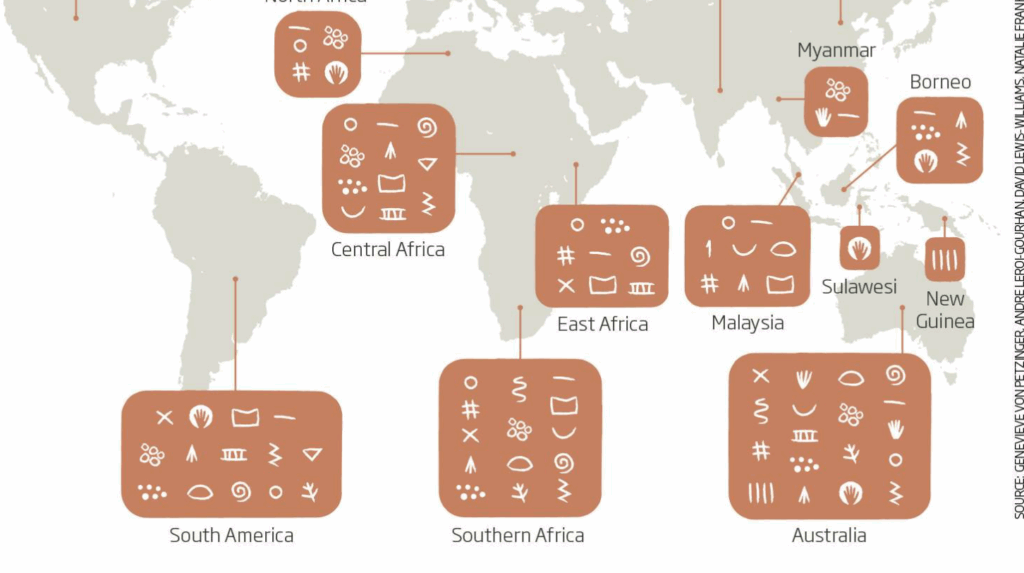
"We may take it for grant­ed that the ear­li­est writ­ing sys­tems devel­oped with the Sume­ri­ans around 3400 B.C.E. The archae­o­log­i­cal evi­dence so far sup­ports the the­o­ry. But it may also be pos­si­ble that the ear­li­est writ­ing sys­tems pre­date 5000-year-old cuneiform tablets by sev­er­al thou­sand years. And what's more, it may be pos­si­ble, sug­gests pale­oan­thro­pol­o­gist Genevieve von Pet­zinger, that those pre­his­toric forms of writ­ing, which include the ear­li­est known hash­tag marks, con­sist­ed of sym­bols near­ly as uni­ver­sal as emo­ji."
"The study of sym­bols carved into cave walls all over the world-including pen­ni­forms (feath­er shapes), clav­i­forms (key shapes), and hand stencils-could even­tu­al­ly push us to "aban­don the pow­er­ful nar­ra­tive," writes Frank Jacobs at Big Think, "of his­to­ry as total dark­ness until the Sume­ri­ans flip the switch." Though the sym­bols may nev­er be tru­ly deci­pher­able, their pur­pos­es obscured by thou­sands of years of sep­a­ra­tion in time, they clear­ly show humans "undim­ming the light many mil­len­nia ear­li­er.""
Archaeological evidence places the earliest conventional scripts with the Sumerians around 3400 B.C.E., but cave symbols suggest symbolic communication may greatly predate cuneiform. Prehistoric marks—including penniforms (feather shapes), claviforms (key shapes), and hand stencils—appear across continents and millennia. Some prehistoric symbols, including the earliest known hashtag-like marks, resemble near-universal signs akin to emoji. Although many cave symbols may remain undecipherable, their consistency across sites and occurrences as far back as 40,000 years indicates sustained symbolic practice. Symbols of this type have been catalogued from 52 caves in France, Spain, Italy, and Portugal.
Read at Open Culture
Unable to calculate read time
Collection
[
|
...
]